FOOD
How Many Eggs Are Right For You In A Day?
Published
7 months agoon

Eggs are often praised as nutritional, containing high-quality protein, essential vitamins, and minerals. However, concerns about cholesterol have led to some confusion about how many eggs are healthy to eat. While eggs deliver valuable nutrients, understanding the concept of moderation is key to incorporating them into a balanced diet.
While some previous dietary guidelines restricted egg consumption due to cholesterol concerns, recent research suggests a more nuanced approach. The body naturally produces cholesterol, and dietary cholesterol from eggs may not have a significant impact on heart health for most healthy individuals.
However, moderation remains important. While eggs offer numerous benefits, they also contain calories and saturated fat. Overconsumption can contribute to an unhealthy diet, potentially impacting cholesterol levels and overall health.
So, how many eggs are considered moderate? While individual needs may vary, most healthy adults can safely enjoy around one to two eggs per day as part of a balanced diet. This allows you to reap the nutritional benefits of eggs without potentially exceeding the recommended limits for saturated fat and cholesterol.
Remember, a healthy diet focuses on variety and balance. Include eggs alongside other sources of protein, healthy fats, and essential vitamins and minerals to ensure your body receives the nutrients it needs to thrive.
Cholesterol concerns
While eggs offer a wealth of nutrients, concerns about cholesterol sometimes lead to confusion about healthy consumption. One large egg indeed contains about 186 mg of cholesterol, primarily found in the yolk. However, it’s important to understand the evolving science around dietary cholesterol and its impact on individual health.
Recent research suggests that dietary cholesterol, like that found in eggs, may have less impact on blood cholesterol levels than previously believed. This positive news means that enjoying eggs as part of a balanced diet is generally safe for most healthy individuals.
However, there are some important nuances to consider. Individuals with pre-existing health conditions, particularly diabetes or heart disease, may need to be more mindful of their egg intake.
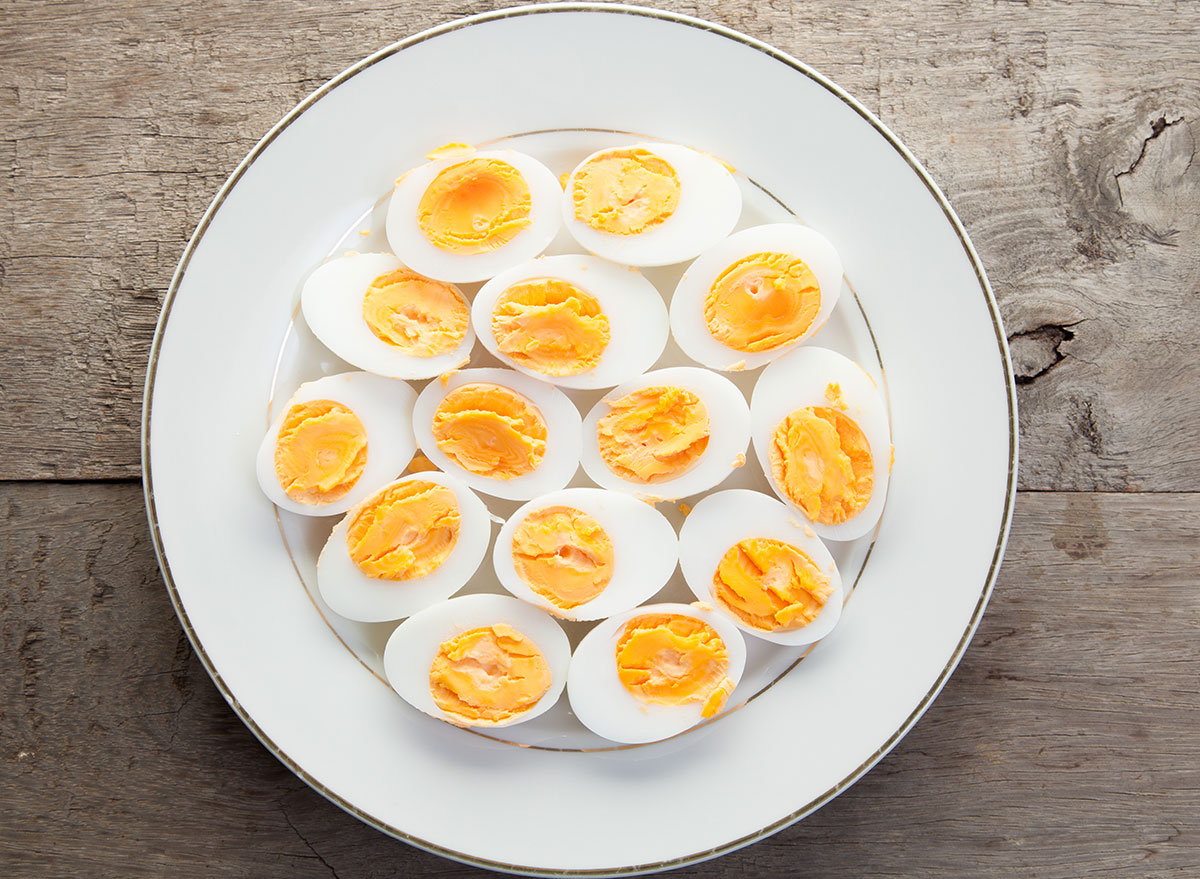
Ultimately, when it comes to eggs and cholesterol, consider individual health factors and consult a healthcare professional for personalised guidance. Listen to your body, embrace moderation, and enjoy eggs as part of a balanced and nutritious diet!
Balanced diet benefits
Eggs deliver a protein punch along with key vitamins and minerals. They’re convenient and affordable, making them a popular breakfast staple. But while eggs deserve a place on your plate, remember: variety is the spice of life, especially when it comes to protein sources.
Relying solely on eggs for your protein needs means missing out on the benefits other options offer. Lean meats, for example, are rich in iron, which is important for healthy red blood cells. Fish provides omega-3 fatty acids, which are important for brain and heart health. Legumes, like beans and lentils, are packed with fibre, which aids digestion and promotes satiety. These are just a few examples of the unique nutritional contributions each protein source brings to the table.
Think of your diet as an artist’s palette. Eggs can be a shining yellow, but to create a masterpiece, you need a spectrum of colours. Including a variety of protein sources paints a more complete picture of health on your plate. Each addition brings distinct nutrients and flavours, creating a more satisfying and nourishing body.
Get the latest and greatest updates right away! Join our exclusive WhatsApp channel and never miss out on exciting news again.
Calorie caution
While eggs might seem like a harmless breakfast staple, their seemingly low-calorie count (around 70 per large egg) can be deceiving. Indulging in multiple eggs each day can unwittingly contribute to a significant calorie surplus, especially if you’re mindful of your weight but not actively adjusting other parts of your diet to compensate.
Imagine enjoying two scrambled eggs with toast for breakfast, followed by a hard-boiled egg as a mid-morning snack. Before you know it, you’ve already racked up almost 200 calories just from eggs alone. This hidden calorie creep can easily derail your weight management goals if not taken into account.

Remember, moderation is key! Enjoy eggs as part of a balanced diet, and be mindful of portion sizes, especially if weight management is a goal. By making informed choices and embracing a variety of protein sources, you can fuel your body for optimal health without sacrificing taste or satisfaction.
Saturated fat and heart health
While they are packed with protein and vitamins, they also contain saturated fat—around 1.6 grams per large egg. This amount might seem small, but indulging in multiple eggs daily can add up quickly, potentially exceeding recommended limits and impacting heart health in the long run.
So, how many eggs are just right? Unfortunately, there’s no one-size-fits-all answer. The magic number depends on several factors:
- Your overall diet: Are you already incorporating other sources of saturated fat, like red meat or dairy? If so, moderation with eggs becomes even more important.
- Your health: Do you have pre-existing conditions like high cholesterol or heart disease? If yes, consulting a healthcare professional for personalised guidance is crucial.
- Your individual needs: Are you actively managing your weight or have specific nutritional goals? Channelling your egg intake to fit your unique needs is key.
For many, one egg per day can comfortably fit into a balanced diet without exceeding recommended limits. This allows you to reap the benefits of eggs without compromising your health.
However, remember:
- Moderation is key. While they are nutritious, don’t rely on them solely for protein. Explore other options, like lean meats, fish, and legumes, for a wider range of nutrients.
- Listen to your body. Pay attention to how you feel after consuming eggs. If you experience discomfort or have concerns, adjust your intake accordingly.
- Seek professional guidance if needed. Talk to a healthcare professional for personalised advice based on your unique health situation and goals.
Ultimately, cracking the code to healthy egg consumption lies in understanding your individual needs and practising moderation.
If you liked this article, also read this.
You may like
-


6 Incredible Types Of Food Photography
-


Food Photography: How To Take Perfect Pictures Of Your Food
-


Are You A Vegan? Here Are 5 Nigerian Vegan Recipes To Try Out
-


How To Cook White Soup (Ofe Nsala)
-


Food & Wine Pairings: A Guide To Enhancing Your Dining Experience
-
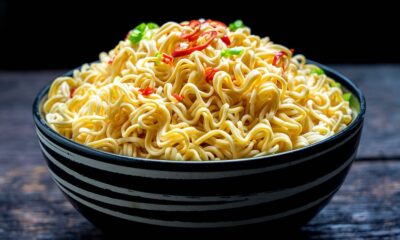

Here’s Why You Can’t Stop Eating Instant Noodles

Are you a foodie who loves to take pictures of your food? Are you a food business owner? Do you need to know how to take perfect pictures of your food for business? You also wish to know the different types of photography for your food? Get in here for some reading time together.
Food photography is a specialized genre that combines the art of photography with different types of culinary delights. It requires a keen eye for detail, an understanding of composition, and a creative approach to showcasing food in its most appetizing form.
Whether used for marketing, editorial, or personal projects, food photography plays a vital role in how we perceive and connect with food. There are several types of food photography, each with its unique style and purpose.
Here, we explore six incredible types of food photography that cater to different needs and audiences.
1. Product Photography or Packshots
Product photography, often referred to as packshots, focuses on capturing the food product itself. Photographers primarily use this type of photography for packaging, catalogues, and online stores to display the product clearly and accurately. The goal is to present the food in a way that highlights its features, such as texture, colour, and packaging.
In product photography, the background is usually simple and uncluttered, often white or neutral, to ensure that the product stands out. Photographers set up lighting carefully to minimize shadows and reflections. They meticulously arrange every detail to showcase the product in the best possible light.
For example, when photographing a jar of honey, the photographer might focus on the golden colour, the smooth texture, and the clarity of the jar. The result is a clean, professional image that makes the product appealing to consumers.
2. Advertising
Advertising food photography aims to promote a product or brand. Unlike product photography, which focuses solely on the product, advertising photography is more about creating a visual story that connects with the audience on an emotional level. The images are often used in magazines, billboards, social media, and other promotional materials.
In advertising photography, creativity is key. The photographer works closely with a team, including art directors, food stylists, and marketing experts, to develop a concept that resonates with the target audience. The food is presented in a way that evokes desire, making viewers want to taste or purchase the product.
For instance, an advertising photo for a chocolate brand might feature a luscious, melting chocolate bar, surrounded by rich ingredients like nuts and caramel, with a tagline that suggests indulgence.
3. Product in Mood
Product in mood photography is a blend of product photography and lifestyle photography. It goes beyond just showing the product by placing it in a context that evokes a particular mood or atmosphere. Photographers often use this type of photography for social media, websites, and editorial content to connect the product with a lifestyle or experience.
In product in mood photography, the setting plays a significant role. The photographer might use props, lighting, and composition to create a scene that enhances the product’s appeal.
For example, a photo of a steaming cup of coffee on a cosy wooden table, with soft morning light filtering through a window, creates a warm, inviting mood that appeals to coffee lovers. The product becomes part of a larger narrative, making it more relatable and desirable.
4. Recipe
Recipe photography is all about showcasing the process and results of cooking. Photographers commonly use this type of photography in cookbooks, food blogs, and instructional content to focus on the ingredients, preparation steps, and the final dish. The goal is to make the food look as delicious and achievable as possible, encouraging viewers to try the recipe themselves.
In recipe photography, the photographer often captures the different stages of cooking, from chopping vegetables to plating the final dish. Close-up shots are frequently used to highlight textures and details, such as the crispiness of roasted chicken or the creaminess of a sauce.
The images are typically well-lit and styled to look natural and appetizing. The key is to make the food look both delicious and easy to prepare, inspiring confidence in the viewer.
5. Lifestyle
Lifestyle food photography captures food in the context of everyday life. This type of photography is about more than just the food itself; it’s about the experience of eating and sharing meals with others. It’s commonly used in magazines, social media, and branding materials where the focus is on conveying a particular lifestyle or culture.
In lifestyle food photography, the setting, people, and emotions are just as important as the food. The photographer might capture a family enjoying a picnic, friends sharing a meal at a rustic table, or a chef preparing a dish in a bustling kitchen.
The images are often candid and natural, conveying a sense of warmth, community, and enjoyment. The goal is to tell a story that resonates with the viewer, making them feel connected to the scene and, by extension, to the brand or message.
6. Documentary
Documentary food photography focuses on telling a story about food, its origins, and its cultural significance. This type of photography is often used in editorial work, documentaries, and social campaigns. Here, the aim is to educate or raise awareness about food-related issues.
In documentary food photography, the photographer may capture the journey of food from farm to table. Next, it could include the traditional methods of food preparation or the people who grow and produce food. The images are often raw and unfiltered, showing food in its natural context.
For example, a photo series might document the process of harvesting grapes in a vineyard. This could be done from the early morning labour to the final bottle of wine. The emphasis is on authenticity and storytelling, providing a deeper understanding of food and its impact on society.
Conclusively, each type of food photography serves a different purpose, from promoting products to telling stories. Understanding these types helps photographers choose the right approach for their projects. Also, it ensures that the final images not only look beautiful but also effectively communicate the desired message.
Food photography continues to be a powerful tool in how we perceive and connect with food. Regardless if it’s a simple product shot or an evocative lifestyle image.
Check here for more food articles.

The traditional foods in Nigeria reflect centuries of history and regional influences. From the spicy ofada rice of the Yoruba to the hearty egusi soup of the Igbo, each dish tells a story of tradition.
The northern regions offer delicacies like suya, a lump of spiced grilled meat, while coastal areas serve up fresh seafood specialities. Staples such as yam, cassava, and plantains form the backbone of many meals, often accompanied by flavorful stews and sauces.
The traditional foods in Nigeria are not just sustenance; it’s a celebration of community, with meals often shared communally. As the country continues to evolve, its cuisine remains a proud proof of its heritage.
What are the 5 must-try traditional foods in Nigeria?
1. Egusi Soup and Fufu
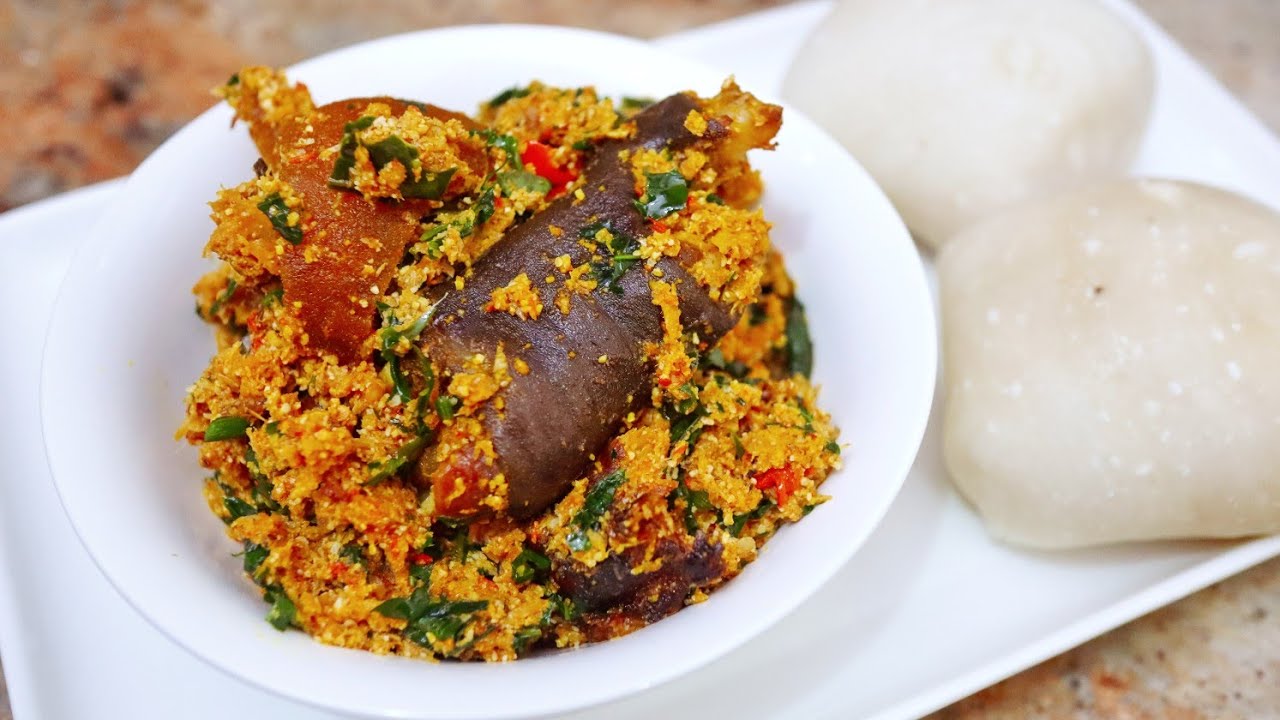
Nigerians prepare Egusi soup using ground melon seeds as the main ingredient. Cooks combine these seeds with palm oil, various vegetables, and proteins like beef, chicken, or fish to create a flavorful dish. Diners typically enjoy this soup alongside fufu, a starchy accompaniment.
To make fufu, people boil and mash root vegetables such as cassava or plantains, forming a dough-like consistency. The combination of Egusi soup and fufu offers a satisfying and traditional Nigerian meal.
2. Nigerian Jollof Rice
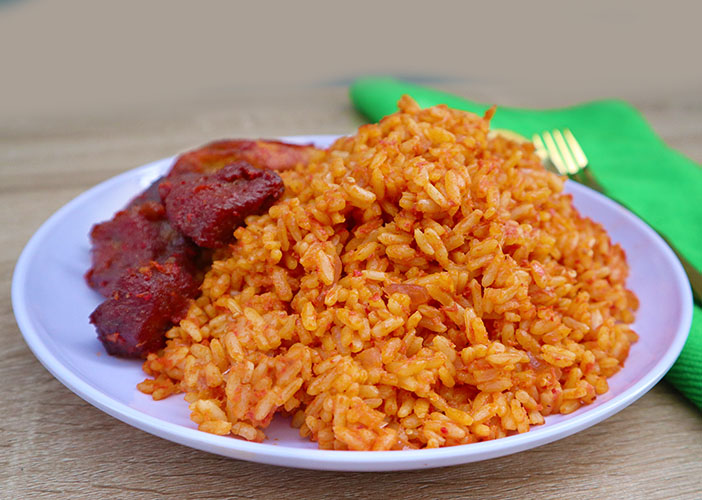
West Africans have created Jollof rice, a dish that now enjoys international fame. Cooks prepare this flavorful rice by combining it with tomatoes, onions, and peppers. They season the mixture with various spices, including bouillon cubes, thyme, and curry powder.
Chefs often pair Jollof rice with chicken, fish, beef, or vegetables. Diners frequently enjoy it alongside fried plantain or coleslaw. The dish’s popularity continues to grow, both within West Africa and around the world.
3. Suya

Suya is a popular Nigerian street food that consists of grilled marinated beef, chicken, or goat. Cooks skewer the meat and grill it over an open flame. They often season it with a blend of spices like ginger, garlic, onion, and ground peanuts. Suya typically comes with a side of onions, tomatoes, and a spicy suya sauce.
4. Amala and Ewedu

Amala and ewedu is a traditional Yoruba dish that combines a starchy swallow made from amala flour, derived from cassava, with a green vegetable stew called ewedu. To prepare ewedu, cooks blend jute leaves with water, onions, and a bit of seasoning.
5. Ofada Rice and Palm Oil Stew
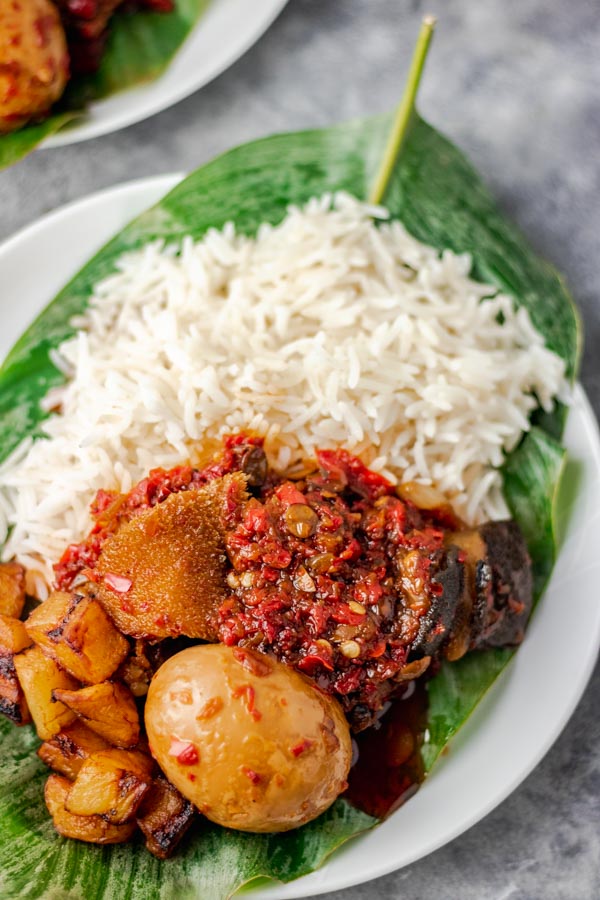
Ofada rice is a local rice variety known for its nutty flavour and aroma. It is often cooked with palm oil stew, which is made with tomatoes, onions, peppers, and a variety of spices. Palm oil stew is typically red and has a rich, slightly sweet flavour.
These are just a few of the many delicious traditional foods that Nigeria has to offer. Besides its influences and rich culinary showoff, Nigerian cuisine is sure to please even the most discerning palate.
What is the most popular signature dish in Nigeria?
Jollof Rice is a culinary icon in Nigeria, enjoyed throughout the country. You might be curious about its widespread popularity. And you’ll be surprised to learn that it’s essentially rice cooked with tomatoes, onions, peppers, and a variety of spices.
What sets Jollof Rice apart is the unique blend of spices and cooking techniques that each region and household brings to the table. While the core ingredients remain consistent, the variations in flavour profiles and preparation methods make Jollof Rice a truly diverse and enjoyable dish.
From the fiery Jollof Rice of the south to the more subtle flavours of the north, each region boasts its own distinctive take on this beloved dish. Whether you prefer your Jollof Rice spicy, sweet, or somewhere in between, there’s a version to suit every palate.
What are the top 5 basic foods in Nigeria?
- Fruits and vegetables are essential for providing vitamins, minerals, and fibre. They come in a variety of colours, flavours, and textures, making them versatile and enjoyable to incorporate into your diet.
- Starchy foods, such as bread, rice, pasta, and potatoes, are a great source of carbohydrates, which provide energy for your body. They are also rich in fibre, which aids digestion.
- Dairy products like milk, cheese, and yoghurt are excellent sources of calcium, protein, and vitamin D. These nutrients are crucial for strong bones and teeth.
- Protein foods like meat, poultry, fish, eggs, beans, and lentils are essential for building and repairing tissues in your body. They also provide essential amino acids, which are building blocks for protein.
- Healthy fats found in foods like avocados, nuts, seeds, and olive oil are important for energy, hormone production, and cell function. They also help absorb vitamins and minerals.
For more articles on foods, check here.
FOOD
Food Photography: How To Take Perfect Pictures Of Your Food
Published
2 weeks agoon
August 24, 2024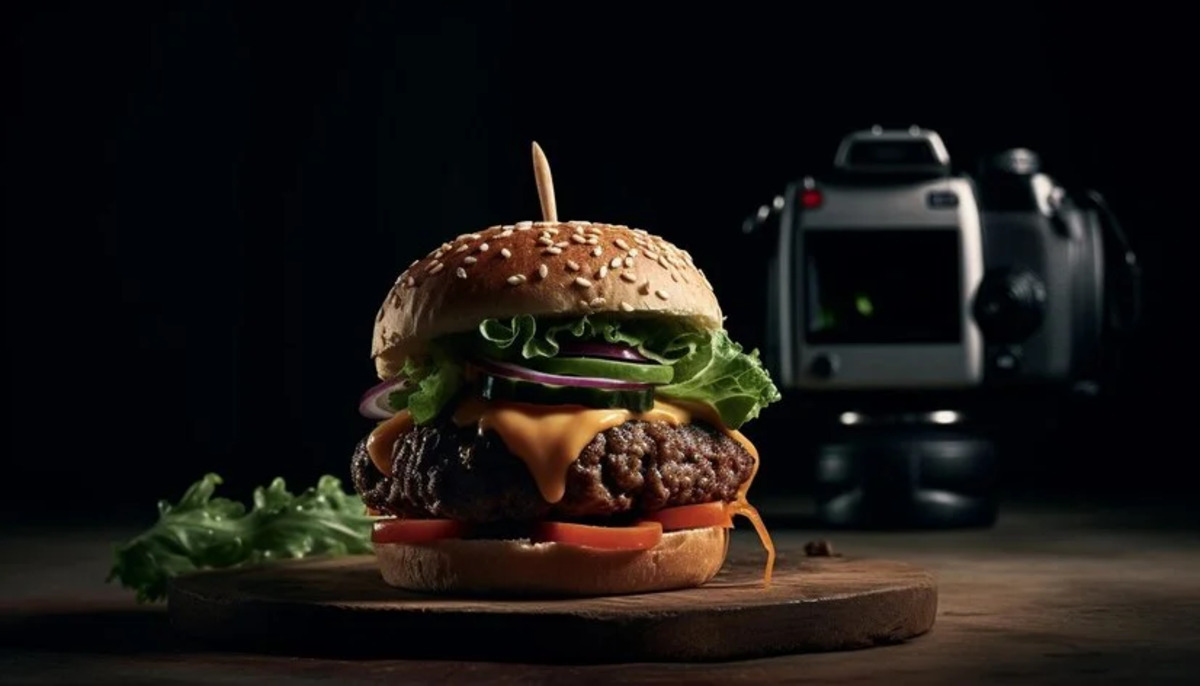
Businesses such as restaurants, food trucks, bakeries, and grocery stores rely heavily on the quality of their food photography to attract and retain customers. High-quality food images are essential for meeting the expectations of potential customers and showcasing the appeal of your offerings.
However, capturing great product photography of food doesn’t necessarily require hiring a professional photographer or investing in expensive equipment. Even beginners can achieve professional-looking photographs using something as simple as a smartphone camera app.
Here are our top food photography tips to help you get started!
How to take pictures of food
1. Prepare your food to be photo-ready: Arrange your food to highlight its best features. Select surfaces and cutlery that complement the dish. Position the main subject of your photo in the centre of the plate, leaving some space around the edges for a balanced look.
2. Get the lighting right: Illuminate your food from the side rather than directly from the front. Whenever possible, use natural light, and opt for softer lighting when natural light isn’t available. Be mindful of harsh shadows that can detract from the image.
3. Experiment with framing: Try capturing your food from various angles to find the most appealing shot. Use warmer, appetizing colours that stay true to the dish’s appearance. Apply depth-of-field techniques to focus on the most mouthwatering aspects of your photo.
4. Edit your food photos like a professional: Sharpen your image to enhance detail. Adjust the white balance to neutralize cooler tones and emphasize warm colours. Slightly increase the contrast, brightness, and saturation to make your food look more vibrant without overdoing it.
5. Don’t be afraid to get creative: Remember that rules can be broken. Experiment with unique angles, perspectives, colour palettes, or compositions to make your food photos stand out from the crowd.
What is food photography?
Food photography is a specialized genre of photography that centres on capturing visually captivating, appetite-stimulating images of food. This photographic discipline has a critical purpose, whether the context is a cookbook, a restaurant menu, or a food-focused blog.
By showing delicious dishes through the lens, of food photographers employ their craft to inspire people to explore and enjoy new culinary experiences.

What makes good food photography?
At its core, a good food photograph should effectively convey the dish’s most appealing qualities and innate deliciousness. The goal is to celebrate the colours and textures of the culinary creation, rather than muting or obscuring them.
This means carefully avoiding blurry, haphazard snapshots, unappealing camera angles, and that ubiquitous yellowish cast that can so easily detract from the visual appeal of a dish.
The fundamental purpose of a successful food photograph is to evoke the food’s inherent, mouth-watering desirability. By highlighting the dish’s most enticing attributes, the image can inspire the viewer’s senses and ignite their appetite. Avoiding common pitfalls like poor focus, unflattering perspectives, and unnatural colour casts is essential to achieving this objective.
Ultimately, a truly great food photograph should elevate the subject, showing the food’s most captivating features and inviting the viewer to experience its deliciousness through the lens. This requires a keen eye for composition, lighting, and colour management, ensuring that the final image does justice to the culinary masterpiece it represents.
What skills are required for food photography?
- Dexterity: To capture food in its most appetizing form, food photographers must possess exceptional manual dexterity, able to delicately manipulate props, adjust lighting, and compose shots with precision.
- Eyesight and colour vision: A keen eye for detail and a sharp sense of colour are essential for food photographers. They need to discern subtle nuances in texture, hue, and saturation to create visually appealing and accurate images.
- Business acumen: Beyond artistic skill, food photographers must also demonstrate business acumen. This includes understanding market trends, negotiating contracts, managing finances, and effectively marketing their work to attract clients.
- Interpersonal and communication skills: Successful food photographers build strong relationships with clients, chefs, and other professionals. Excellent interpersonal and communication skills are crucial for collaborating effectively, understanding client needs, and conveying their vision.
If you enjoyed reading this article, you can visit here to read more.
Latest


Drink More Water Daily For Health Boost With These 12 Simple Tips
To increase your daily water intake, try incorporating tips to drink more water daily, such as tracking how much you...


10 Breathing Exercises For Stress Relief
For high stress relief, incorporate breathing exercises into your routine. These exercises can promote calmness and relaxation, requiring only a...


13 Stunning Ways To Style Small Locks
Small locks, also known as micro locs or sister locks, offer a versatile and low-maintenance hairstyle that’s gaining popularity among...


How Fast Fashion Impacts The Environment
Sadly, the arrival of fast fashion has dramatically changed the fashion landscape. Trends no longer fade away gradually; they are...


7 Scary Nigerian Myths We Were Told As Kids
In Nigeria, there’s a special kind of magic that you can’t just see. It’s a feeling. I want to share...


D’banj Is The Only Nigerian Man That Has Given Me Free Money – Toke Makinwa Reveals
Nigerian media personality Toke Makinwa has shared a heartwarming story about her encounter with singer D’banj. She revealed that he...


Enugu State Governor Names Street After Viral Musician, Gentleman Mike Ejeagha
People often hailed Gentleman Mike Ejeagha as the grandfather of Igbo folk music. He has remained an iconic figure in...


Omoni Oboli’s “Last Year Single” Debuts On Netflix This September
Nollywood actress and director, Omoni Oboli, has announced that her debut series, “Last Year Single,” produced in 2020, will premiere...


Ayra Starr Joins Tems On Stage For Surprise Performance
Following the release of her debut album, “Born In The Wild,” Tems has embarked on a world tour, where she...


When Young Girls Sit Down And Daydream About Getting Married, I Never Did – Nancy Isime
Nigerian actress Nancy Isime has shared her views on marriage, revealing that, unlike many young girls who dream of their...
-Ad-




The Rich Culture & Style Of Nigerian Traditional Clothing

Makeup For Black Skin: Mastering Soft Glam Tutorials

Are You A Gen Z? These Nutrition Tips Are Just For You!

Here’s Why Sexual Health Education Is Important

How To Cook White Soup (Ofe Nsala)

6 Wellness Practices For The Millennials

New Inkbot Film “The Betrayed” Earns ₦14.7 Million After One Week In Cinemas

Food & Wine Pairings: A Guide To Enhancing Your Dining Experience

Check Out These Nigerian Cocktail Recipes

The Quietest Room On Earth: You Win $5 Million If You Can Stay For One Hour
Trending
-

 ENTERTAINMENT5 days ago
ENTERTAINMENT5 days agoIyabo Ojo Confirms Daughter’s Engagement To Tanzanian Lover
-

 DRINKS7 days ago
DRINKS7 days ago8 Best Healthy Juice Cleanse Recipes
-

 ENTERTAINMENT5 days ago
ENTERTAINMENT5 days agoRema Donates ₦105M To Edo Church That Opened Shop For His Mum
-

 OPINION6 days ago
OPINION6 days ago5 Types Of BDSM And Practice Tips
-

 NEWS4 days ago
NEWS4 days agoMiss Universe Nigeria, Chidimma Adetshina Promises To Make Nigeria Proud
-

 MOVIES4 days ago
MOVIES4 days agoDaniel Oriahi’s “The Weekend” Makes ₦8M In Its First Weekend
-

 ENTERTAINMENT5 days ago
ENTERTAINMENT5 days agoMercy Aigbe Celebrates Priscilla Ojo’s Engagement
-

 MOVIES3 days ago
MOVIES3 days agoDaniel Oriahi’s “The Weekend” Officially Selected For BFI London Film Festival

